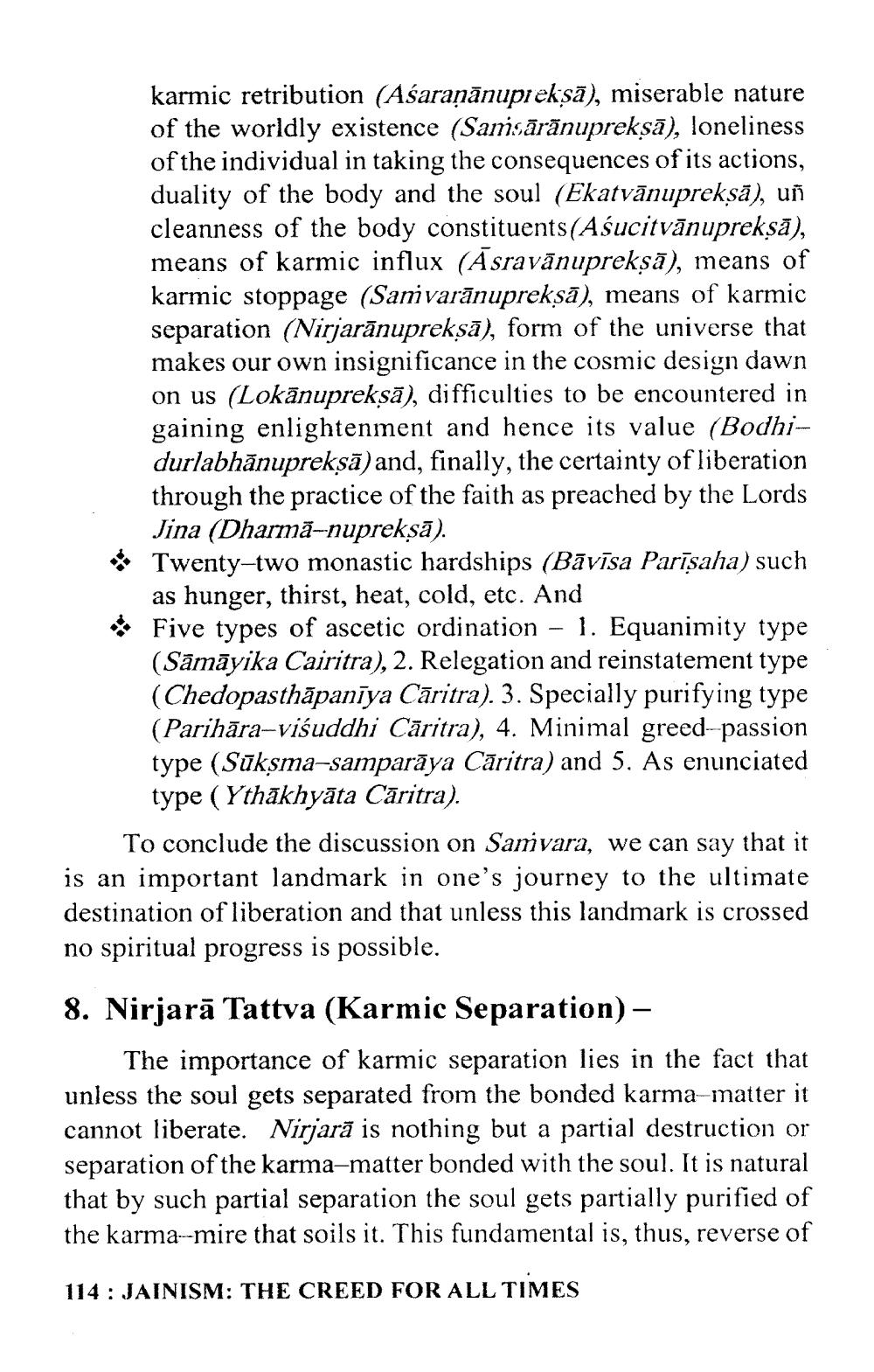________________
karmic retribution (Aśaraṇānupiekṣā), miserable nature of the worldly existence (Samṣārānuprekṣā), loneliness of the individual in taking the consequences of its actions, duality of the body and the soul (Ekatvānuprekṣā), uñ cleanness of the body constituents (Asucitvānuprekṣā), means of karmic influx (Āsravānuprekṣā), means of karmic stoppage (Sanivaranuprekṣā), means of karmic separation (Nirjarānuprekṣā), form of the universe that makes our own insignificance in the cosmic design dawn on us (Lokānupreksa), difficulties to be encountered in gaining enlightenment and hence its value (Bodhidurlabhānuprekṣā) and, finally, the certainty of liberation through the practice of the faith as preached by the Lords Jina (Dharma-nuprekṣā). Twenty-two monastic hardships (Bāvīsa Parīsaha) such as hunger, thirst, heat, cold, etc. And Five types of ascetic ordination 1. Equanimity type (Sāmāyika Cairitra), 2. Relegation and reinstatement type (Chedopasthapanīya Cāritra). 3. Specially purifying type (Parihara-viśuddhi Caritra), 4. Minimal greed-passion type (Sūkṣma-samparāya Cāritra) and 5. As enunciated type (Ythākhyāta Caritra).
-
To conclude the discussion on Samvara, we can say that it is an important landmark in one's journey to the ultimate destination of liberation and that unless this landmark is crossed no spiritual progress is possible.
8. Nirjarā Tattva (Karmic Separation) –
The importance of karmic separation lies in the fact that unless the soul gets separated from the bonded karma-matter it cannot liberate. Nirjara is nothing but a partial destruction or separation of the karma-matter bonded with the soul. It is natural that by such partial separation the soul gets partially purified of the karma--mire that soils it. This fundamental is, thus, reverse of
114: JAINISM: THE CREED FOR ALL TIMES




